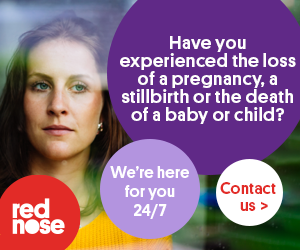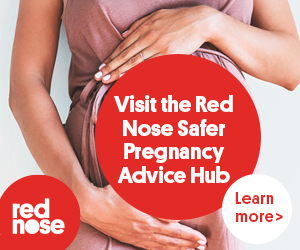As much of the country heads into the cold toe time of year, we’ve got some important information to share with you about keeping your little one safe and comfortable during sleep, We know how families often want to rug their little ones up during the colder months, but this is not always the safest thing to do.
Research has shown a clear link between overheating and an increased risk of sudden unexpected death in infancy. So, let’s dive into how you can dress your baby for sleep in a way that promotes safety and peace of mind.
Babies regulate their temperature primarily through their head and face, which is why we recommend placing your baby on their back for sleep with their head and face uncovered. It’s also crucial to remove any head coverings before they doze off. Remember to position your baby with their feet at the bottom of the cot, and if you’re using sheets or blankets, make sure they are securely tucked in to prevent your baby from wriggling down and getting too warm.
Now, when it comes to the room temperature, we don’t recommend a specific number because there isn’t evidence to prove that maintaining a precise room temperature prevents sudden infant death. As long as you put your baby to sleep on their back and dress them appropriately for the room temperature – neither too hot nor too cold – with their head and face uncovered, you can rest assured that you’re protecting them from overheating.
We don’t believe it’s necessary to use a room temperature monitor or leave the heating or cooling on all night. Simply ensure that your baby is dressed right for the temperature of the room, and you’re good to go. To check if they’re comfortable, feel your baby’s tummy, which should feel warm. Don’t stress if their hands and feet feel cool, this is totally normal.
If you notice signs of heat stress, such as flushed and clammy skin, simply remove some bedding or clothing and offer fluids like breast milk for young babies or water for older children.
Now, let’s talk about what your baby should wear for sleep. Dress them as you would dress yourself, considering the temperature of the room—comfortably warm, not too hot, and not too cold. The right sleepwear can make a big difference in keeping your baby comfortable and safe.
If using a safe sleeping bag make sure you select one that is well-fitted. Ensure that your baby’s arms are fully out of the sleeping bag and that it fits snugly around the neck.
For younger babies being swaddled or wrapped, we recommend using lightweight and breathable fabrics like muslin and cotton. If you’re using sheets and a blanket, make sure they’re also lightweight and made of muslin or cotton fabric. However, avoid placing soft items such as lambswool or overlays in the cot, as they can increase the risk of overheating.
When dressing your baby for sleep, always keep in mind the temperature of the room—comfortably warm, not too hot, and not too cold. For more information on safe sleeping, feel free to check out our Safe Sleep Advice Hub or ask our knowledgeable Safe Sleep Educators any questions you may have.
We’re here to support you and your little one on this so if you have any questions remember you can call our Safe Sleep Advice for Parents and Carers line on 1300 998 698 between 9-5 pm (AEST) or email education@rednose.org.au









